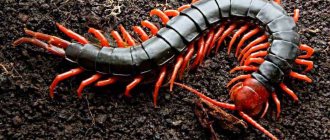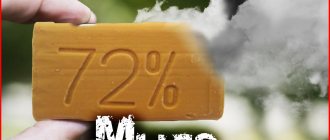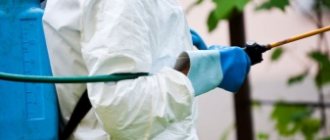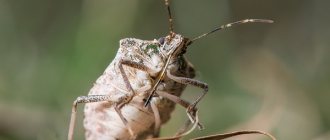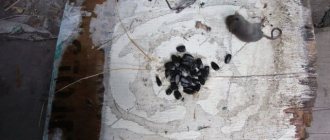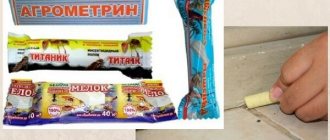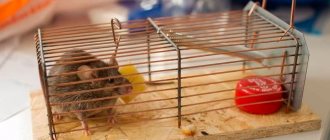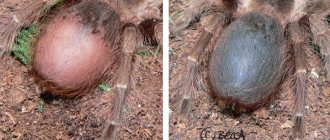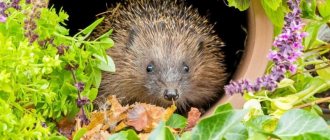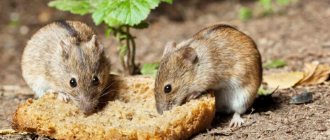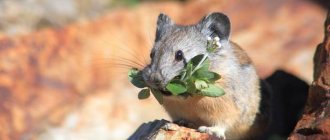For many years now, people have been waging a long struggle against rodents. The enemy has a clear advantage, because mice perfectly adapt to any conditions. Small animals can cause significant trouble. Such creatures intensively spoil food and leave behind an unpleasant odor. If there is a mouse in an apartment or private house, then you will encounter a huge amount of trouble. Rodents choose to live on human property because of the need to spend the winter. It is much more convenient to be in a place with plenty of easily accessible food.
The colors of house mice can be varied, but black animals are much more common. Some may confuse the tiny creature with a rat, but each species has its own distinctive features. There are color variations with an ash and gray-brown body. The size of the tail of such a rodent is half the size of the body. The short ears are set quite widely relative to each other.
In such rodents, there are practically no differences in anatomy between the female and the male. It is easy to find domestic mice in all regions where humans live nearby. Pests do not tolerate high humidity and low temperature conditions. Don't be surprised if you find mice on the floor of your apartment, as the animals prefer to find rather secluded places. It is as easy as possible to get food near residential buildings or outbuildings.
Appearance of mice
It is difficult to find a person who has never met mice in his life. The fact is that many representatives of this family live next to humans for thousands of years. They not only live, but constantly annoy people with their presence. In addition, they spoil food, furniture, clothes and everyday items. Over the long history of coexistence, the mouse has become the hero of some cartoons, and some of the species have become pets. Mice are easy to distinguish from other species of mammals, as they differ in their characteristic features. For example:
- They have an elongated body.
- The long tail can occupy up to 120 percent of the body.
- The head is small with a blunt or elongated muzzle.
- Ears can be large or barely noticeable.
- Small eyes resemble small beads in appearance.
- The nose is small and pink in color.
- The hind legs are designed so that the animal can jump and also rise up, leaning on the outstretched foot.
- The forelimbs are slightly smaller than the hind limbs.
Interesting to know! Mice can be distinguished by the presence of long teeth located in the center of both the upper and lower jaws. The size of teeth changes every day by a couple of millimeters upward. Therefore, the animal constantly grinds them down, often gnawing wood products, including furniture.
Wool and color features
The entire body of mice is covered with coarse hair, the length of which depends on the type of animal and always feels smooth on the surface of the body. There are no mice with fluffy fur.
Coat color can also be very different. Under natural conditions, mice are found in gray, brown, red, black, and ocher colors. Quite rare, but there are albino mice, which are distinguished by white fur and red eyes and nose. If you pay attention to decorative mice, their color can be very diverse - blue, yellow, orange, smoky, etc. The abdomen and sides of mice are always lighter, with white hairs.
It is important to know! A wild mouse can be distinguished from mice that are found in human homes by the presence of a longitudinal strip of a dark or light shade on its back.
In some species of mice, the entire back is painted with longitudinal stripes, both dark and light shades.
Mice sizes
Mice are rodents that are not impressive in size. The body structure of different species is not noticeably different and has similarities. The maximum body length without a tail is within 13 cm, although species with a body length of about 9 centimeters are mainly found.
In nature, a mouse is capable of gaining weight of about 20 grams, although under conditions of intensive nutrition this weight can increase to 50 grams. In other words, animals that live next to humans are in more comfortable conditions compared to those that live in natural conditions.
MICE - INTERESTING FACTS
Habits of a house mouse
These animals are found in all regions near human habitation, excluding the regions of the Far North. This is due to the fact that individuals of this species cannot tolerate high humidity and low temperatures. This animal is very closely related to human activity and happily settles near outbuildings, residential buildings, or even directly in them.
However, with the onset of the warm season, the mouse can move to live at long distances from human habitation; domestic mice are often found even in the tundra. But with the onset of cold weather, the animals move back to their feeding places. Typically they choose:
- Grain warehouses.
- Residential buildings.
- Vegetable storage facilities, etc.
The individual moves no more than 5 kilometers from feeding areas. This is due to one of the behavioral features of the house mouse - it does not make any reserves for the winter and is forced to look for food in a person’s house. She chooses a variety of foods for food, as she has a high level of adaptation.
Animals adjust their activity to human activity, so if there is a source of artificial light, they can be active around the clock. The same applies to the breeding season: given the availability of food and a comfortable temperature, the individual reproduces at any time of the year. In one litter, the female brings up to 7 babies , who become independent a month after birth.
If we talk about representatives of the mouse family in the wild, they usually live in small colonies or family groups. As a rule, in such groups there is one male and several females with offspring. Dominant males aggressively defend the right to territory, which leads to intergroup clashes. Within a family group, such clashes are rare; they often end in the expulsion of adult offspring from the hole.
In nature, mice eat:
- cereals;
- legumes;
- carrion;
- various parts of plants.
In everyday life, the mouse relies on its sense of smell. With its help, the animal not only looks for food for its food, but also recognizes its relatives.
On the paw pads of each individual there are sweat glands, secretions from which mark the territory through which the rodent moves.
Also, when frightened, a special secretion is released into the animal’s urine, which signals to its relatives about fear and the necessary escape. Therefore, in the building in which the animals live, there is a special “mouse” smell.
Mouse squad
Mice are classified as mammals because they give birth to live young. After birth, the female feeds her offspring with milk for a month. Each female has 8 nipples. After mating, the female carries the future mice for about 25 days. 9 days after giving birth, she can mate again and again bring forth offspring. Each time she can give birth to from 1 to 12 cubs. She can become pregnant up to 5 times in a year. The rodent population increases noticeably once every 7 years.
Newly born mice have no fur, no teeth, and they cannot see yet. After just 1 week, the offspring have teeth and hair begins to grow, and after another 20 days they can feed on their own. After 3 months, the young offspring are able to fertilize themselves, increasing the rodent population.
general characteristics
The length of the mouse body, depending on the species, varies from 5 to 19 cm, and if measured with the tail, it doubles. The parameters for all types of mice are similar:
- body elongated;
- the tail is thin, long, depending on the type, 70-120% of the length of the body;
- the head is small, the muzzle is blunt or elongated;
- ears are round, large or small;
- eyes are round, moderately convex, black or red;
- the nose is small, mobile, sensitive;
- the hind limbs are elongated, allowing the animal to jump well and rise, sitting on its hind legs;
- The forelimbs are miniature, shorter than the hind limbs.
In this video you will learn interesting facts about mice:
Diet of mice
In addition to the fact that the mouse is an omnivore, it has to constantly chew something in order to wear down its teeth, which are constantly growing. In this regard, it seems that the rodent eats ingredients that are not at all edible. Therefore, her appetite is explained by some features of her life. So:
- Mice constantly chew on hard objects to keep their teeth from reaching gigantic proportions.
- Mice digest food quickly because they are constantly on the move. During the day, the animal should eat at least 5 grams of food and drink up to 20 ml of water.
- Mice are distinguished by one characteristic feature - they taste all new objects.
The mouse is considered a predator that prefers food of plant origin. She eats worms, insects, chicks, eggs, due to which she replenishes her body with proteins. In addition, if she climbs into the nest of the chicks, she will eat them, and then she will set up her own mouse nest in the bird’s nest.
Despite this, she happily eats seeds, roots and greenery of plants. If there is not enough food for her, then she turns to vegetables, fruits and berries.
Interesting Facts! Having settled in a human home, mice eat everything - sausage, cheese, meat, lard, cookies, candy, soap, napkins, toilet paper and other non-food components. I can’t even dare say that a mouse is a predator.
Fingertip Grip – combined grip
This type can be considered a combination of palm and claw grip. The palm connects to the mouse with a flat arrangement of fingers on the buttons, without claws. The metacarpus is raised in the air and only the bottom of the finger pads are in contact with the surface of the device. Control is carried out using your fingertips and wrist. This type of grip is available in two versions.
Classic Fingertip - contact of the hand with the mouse through the placement of the fingertips on the main buttons, the metacarpal bone is low, the palm does not come into contact with the gadget at other points.
The Fingero-palm is the second popular variation of the fingertip grip. The palm is connected by placing the fingers on the surface of the main buttons and the back of the mouse. The rest of the hand does not touch the periphery.
Which mouse is suitable for Fingertip Grip?
Small mice are the best choice here because only a minimal portion of your palm's metacarpal bone is in contact with the device.
Advantages and disadvantages
- Pressing the main buttons: with your fingertips.
- Contact of the metacarpal bone with the mouse: does not occur.
- Movement: fingers and wrist.
- Convenience: comfortable.
- Advantages: comfortable mouse control, adapts to rapid changes in movement.
Characteristic features of life
It is believed that mice are quite timid by nature. This may be true, but if the mouse does not behave this way, then it will not survive, since it has a sufficient number of natural enemies.
In the wild, the mouse adapts to various conditions of its existence: it crawls, swims, digs holes in the ground, and some species have learned to fly. Such abilities of such a small mammal allow it to survive in such harsh natural conditions.
A mouse can build its nest anywhere - underground, in the hollows of old trees, in bird nests, under stones, etc. When she settles in a person’s house, her nest can be found under the floor, in the attic, in the basement, in the openings between the walls. The rodent goes hunting at night, but does not go far from its nest. During the daytime, mice sit quietly in their hiding places.
Interesting Facts! Some species of mice live in large packs, where the head of the pack is a male with several females. Each individual is responsible for its own territory, where it obtains food for itself. The offspring are raised by all females together, and after they reach “adulthood”, the young are expelled from the pack.
Mice wait out the winter in different conditions. For example:
- In the ground, in deep holes.
- In hay or straw stacks.
- In outbuildings for various purposes.
Mice that spend the winter in natural conditions store food supplies for the winter. To do this, rodents set aside special places in their burrows where they carry everything that could be useful in winter, just so as not to die of starvation.
Mice have a sufficient number of natural enemies - these are reptiles, hedgehogs, cats, dogs, foxes, as well as other birds of prey and animals.
In nature, a mouse can live no more than a year, although at the genetic level the term is about 5 years. This is due to the fact that this rodent has too many natural enemies. In artificial conditions, rodents live for about 3 years, and in laboratory conditions - 7 years.
Character and behavioral characteristics of black house mice
These rodents are timid and run away at any sign of danger or noise. Up close, the animals can hardly see anything, so they navigate using smell, sound and special whiskers. At night, mice orient themselves using similar methods. Animals are quite social and always try to be in the company of their fellow animals.
All mice have a high speed of movement, and the journey of each individual follows a clearly defined route. If you notice trails of rodent excrement, then do not doubt the presence of several parasites. Finding a mouse in a private house or even an ordinary apartment is extremely difficult. Pests look for the most secluded places and build their nests there using available materials. If the scale of contamination of the territory is very sad, then you cannot cope on your own. If there are a large number of rodents on the site, it is best to contact a specialized service.
You can remove all the mice yourself if you use rodenticides from the range of our online store. Special baits, pickled grain, glue and ready-made traps are available. You can use only one product or combine several at once to get the fastest possible effect.
Types of mice with photos and names
Each species of mouse has some characteristics that are dictated by their living conditions. The main difference is their size and color. If you study the characteristics of each species, it is easy to distinguish them from each other.
Little mouse
The smallest representative of the mouse family. The length of the body and tail does not exceed 7 centimeters, so the animal easily fits in the palm of even a child. The rodent forms its nests from grass and small plant branches. Thanks to its tenacious paws with sharp claws, the mouse easily climbs trees. It tolerates winter frosts well, so it behaves actively even in winter.
The coat color is more red, so it is called a yellow mouse. As for the color of the abdomen, muzzle and tips of the ears, it is almost white. This small rodent can cause significant damage to garden crops. Mainly prefers to eat plant foods, but occasionally eats small worms and beetles.
Wood mouse
Already from the name it becomes clear where this animal lives. The forest mouse grows up to 10 cm in length, while the tail is about 7 cm long. It settles mainly on forest edges. It is distinguished by a sharp muzzle and dark red, sometimes almost black color. A distinctive feature of this rodent is the size of its ears - they are large. This type of mouse became the prototype of the hero of one of the cartoons called “Mickey Mouse”. They are not only big, but also round.
A wood mouse can build a nest for itself either in an earthen hole or in a tree, as high as possible. Waits out the winter in burrows. Up to 2 meters deep. During thaws it can be seen in the snow. An absolutely harmless living creature for humans, but a threat to garden plants.
Gerbil
The USA is considered the birthplace of the gerbil. The rodent was brought in for laboratories. Who carried out special studies. After this, the gerbil became widespread and was kept as a pet. The advantage of this rodent is that it does not have the characteristic “mouse” smell. This animal has a rather cute and attractive appearance. In nature, there are up to hundreds of varieties of this unique creature. The dwarf and Mongolian varieties of gerbil are extremely popular.
The back of this attractive creature is brownish-red, and the belly is almost white. A contrasting dark stripe runs along the back. The nose is pink, the ears are small and round, and the muzzle is blunt. This species has slightly larger eyes compared to other mouse species. Another feature is the presence of a tassel at the tip of the tail.
Steppe mouse
The steppe mouse is similar in appearance to the gerbil mouse and grows up to 7 cm in length, while the length of the tail is one third longer than its body. It can cause serious damage to agriculture because it lives in the wild. Lives in deep burrows, stocking them for the winter. It settles in cereal fields, as well as among bushes located near water bodies. For the normal functioning of this pest, dense thickets of grass or bushes are necessary. This type of mouse is often called voles. They are also active in winter, as evidenced by their numerous tracks in the snow.
House mouse
It is considered the most widespread rodent on the planet. With the onset of cold weather, it tries to move closer to people. It is not a problem to find it even on the upper floors of apartment buildings. The pest is still the same! His teeth affect food, things, furniture, interior items, as well as electrical wiring, which often leads to fires.
It grows up to 6 cm in length and has a gray coat color. The rodent's tail is small, its muzzle is slightly elongated, and its ears are small and round.
White mouse
In fact, these are albino mice that can appear in any of the rodent species. This is due to failures in genetics, due to which the coat becomes pure white. As a rule, white mice always have red eyes. Such specimens can often be seen within the walls of laboratories.
Recently, it was possible to breed a white breed of mice with ordinary, black eyes. This type of mouse is very popular among pet lovers.
In conclusion, it is worth noting that throughout our history man has been fighting these rodents, and they still exist.
All About Pets: Decorative Mice
What danger do black house mice pose?
Animals in large numbers quickly spoil fields with grain and other agricultural crops. In the field, mice dig a large number of tunnels and create mounds, so collecting a full harvest becomes extremely problematic. Pests at home spoil food supplies and animal feed. The trails of excrement and residual urine create an unpleasant odor that cannot be easily removed. A mouse under the floor in an apartment and other secluded places becomes a real disaster. It is best to take action early and start using rodenticides before the pest colony multiplies.
The mouse is considered a carrier of infectious diseases that are extremely dangerous for domestic animals and humans. Interior items become ideal for rodents to sharpen their teeth as they grow. Pests not only cause damage to your property, but also pose a serious health threat. It is in your best interest to get rid of the danger quickly and safely. Use special traps and environmentally friendly glue if you do not want to endanger the residents of your home.
Reproduction and offspring
Shrews breed once or twice, less often three times during the year. The gestation period lasts approximately two to three weeks. In each such litter there are from four to fourteen cubs, which are born completely blind and naked. The newborn offspring of shrews are characterized by the presence of an undeveloped proboscis, which gives their appearance a peculiar snub nose. During the summer period, under comfortable conditions, one female often raises about four dozen cubs. Moreover, some of them already manage to give birth to offspring themselves before the end of this summer.
The inside of the nest is carefully lined with dry material, such as grass or leaves. In such a nest, the cubs develop quite quickly, so already at four weeks of age they become completely independent. In shrews, the female and her offspring move in a kind of chain or so-called “caravan”, in which all individuals firmly hold each other’s tails with their teeth.
Young representatives of the class Mammals, the order Insectivores and the family Shrews are characterized by a very amazing ability called the “Denel phenomenon”. With the onset of autumn, such insectivorous mammals experience a noticeable decrease in body size, accompanied by a flattening of the skull. During the period from April to June, there is a pronounced increase in the volume of the cranium, as well as the mass and total volume of the brain.
Common shrew
What other mice are known with a long nose (photos of them will be presented in the article)? These are shrews - small animals that look like ordinary mice, only with more elongated noses, a long tail and sharp teeth. Their body is approximately 7-10 cm long, and their tail is 4-5 cm.
The animal is dark brown on top, brown on the sides. The abdomen is grayish-white. The tail has short, thick fur. The fluffy coat also covers the ears, often only their tips are visible. Long mustache. There are several differences in color.
The shrew lives in underground burrows. Often, these are abandoned dwellings of moles or mice, which the animal occupies if, after a long search, it does not find a free crevice.
In soft soil, it makes the necessary passages along the surface with its nose-proboscis and front paws.
This long-nosed mouse lives in many European countries and Russia, settling in mountains, gardens, and fields. You can also see it near populated areas - villages and hamlets. Here in winter it is an ideal environment - there are warm barns nearby. A prerequisite is that its burrow must be located near a source of water.
Benefits and harms
Shrews bring considerable benefits to humans.
Thanks to their unique trunk nose, they loosen the soil in gardens and vegetable gardens.
They saturate it with oxygen, simultaneously destroying various harmful insects and larvae.
And yet, animal burrows may not appeal to lovers of beautiful lawns.
REFERENCE! Shrews are capable of destroying a large number of harmful insects even in hard-to-reach places for other insectivores and birds: under stones, under snow, in the depths of burrows.
Although shrews are beneficial to the garden, sometimes you have to fight them. Read about how to destroy shrews in your garden or dacha here.
Shrews appear to be cute and fluffy creatures that are quite harmless to people, but their bite can be quite painful, so you should not try to catch these animals and handle them.
https://rusfermer.net/ogorod/vrediteli/zemlerojka/chem-pitaetsya.html/feed
How mice behave in their natural environment
In order for rodents to maintain a constant body temperature, they need to be active in winter and summer, day and night. Gluttony and fussiness for mice are characteristic traits that help them survive and leave offspring.
In the fall, animals begin collecting provisions in a burrow or on the surface of the ground, where the “warehouse” is camouflaged with earth. And if in the off-season rodents are awake at night and sleep during the day, then in winter they remain active around the clock. In spring and autumn, when there is no shortage of food and no temperature fluctuations, mice actively reproduce.
Mice live in large families, since together it is easier for them to defend themselves, get food, build homes, and raise offspring. In a mouse pack there is a leader who maintains order in the group. Female mice are peaceful. But young males do not always put up with their subordinate position. Stomping with its hind legs and aggressive tail strikes indicate the animal’s intention to conquer the “throne.” Inter-family clashes can lead to the disintegration of the pack.
Interesting Facts
Scientists attribute intelligence features to shrews comparable to dolphins and rats. All thanks to the anatomical shape of the skull. Their brain region is expanded, and the brain makes up 1/10 of their body weight, which exceeds the data for humans and dolphins.
In the distant past, people attributed healing properties to animals. It was believed that an ointment prepared from the burnt tail of a shrew could serve as an excellent remedy for the bite of a rabid dog. Its origin still remains a mystery; disputes are being resolved about its identity and place in the system of zoology, as well as about the benefits and harm caused to agriculture. It is possible that soon we will learn about new discoveries and species of these living creatures.
